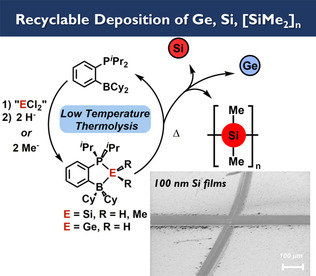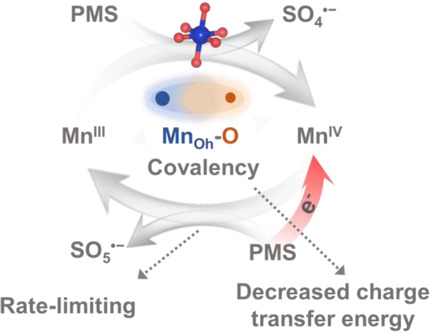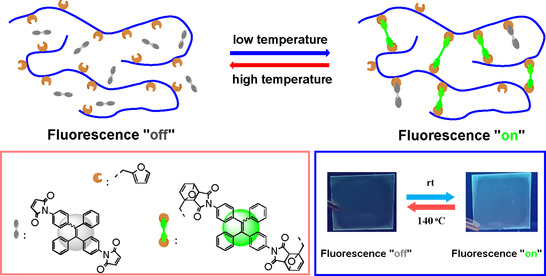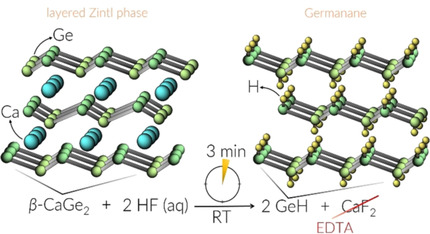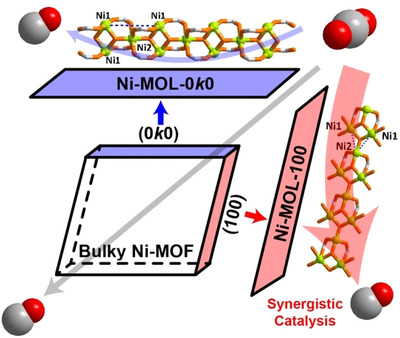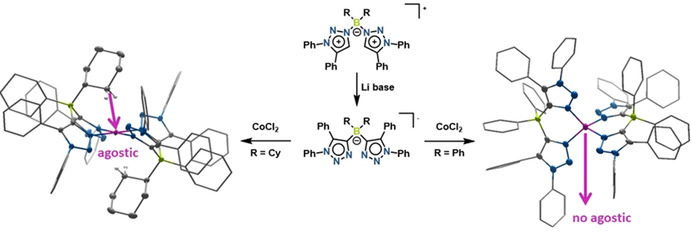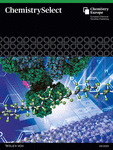Journal list menu
Export Citations
Download PDFs
Titelbild
Titelbild: Maßgeschneiderte SAM-Synthetasen zur enzymatischen Herstellung von AdoMet-Analoga mit Photoschutzgruppen und zur reversiblen DNA-Modifizierung in Kaskadenreaktionen (Angew. Chem. 1/2021)
- Page: 1
- First Published: 15 December 2020
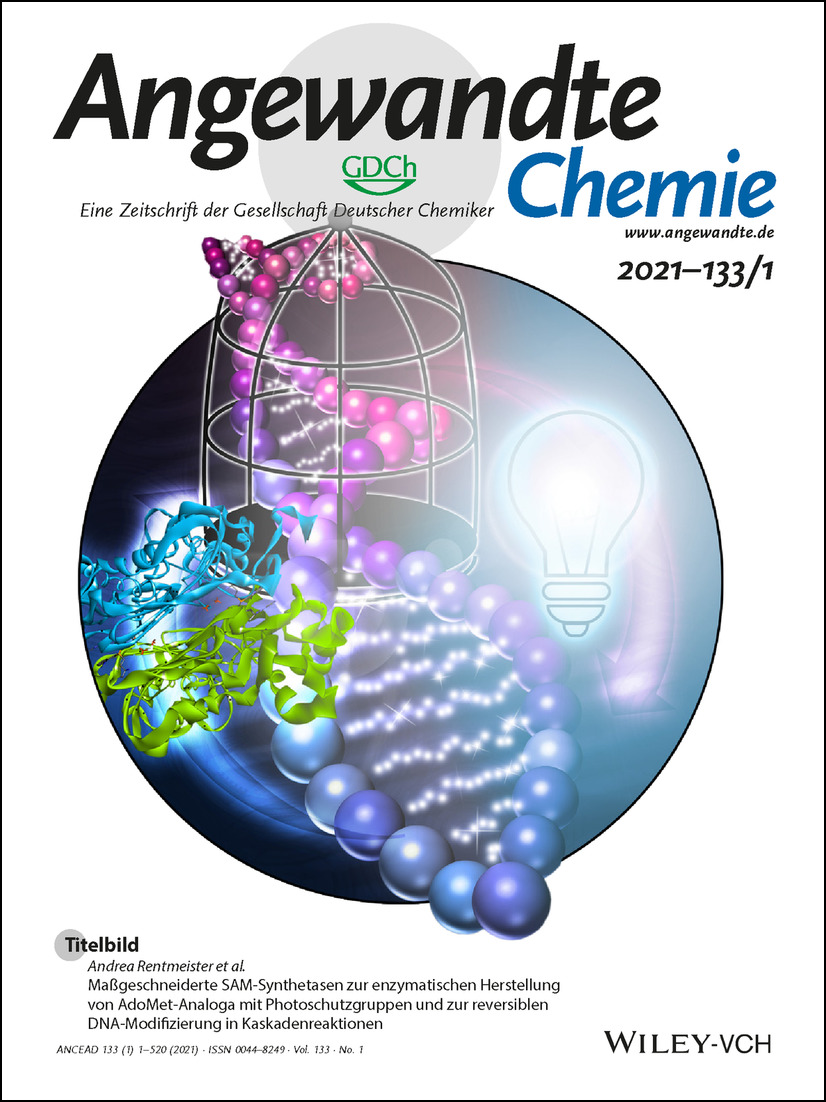
Die sequenzspezifische Modifikation (“Schreiben”) und lichtinduzierte Entfernung (“Löschen”) von DNA wird erstmals in einer enzymatischen Kaskade beschrieben. Andrea Rentmeister und Mitarbeiter berichten in ihrem Forschungsartikel auf S. 484 über eine modifizierte SAM-Synthetase, die Methioninanaloga mit photospaltbaren Gruppen umsetzt und zeigen die Kompatibilität mit Methyltransferasen, um DNA mit einem lichtempfindlichen “Käfig” zu erhalten.
Innentitelbild: Mn−O Covalency Governs the Intrinsic Activity of Co-Mn Spinel Oxides for Boosted Peroxymonosulfate Activation (Angew. Chem. 1/2021)
- Page: 2
- First Published: 12 November 2020
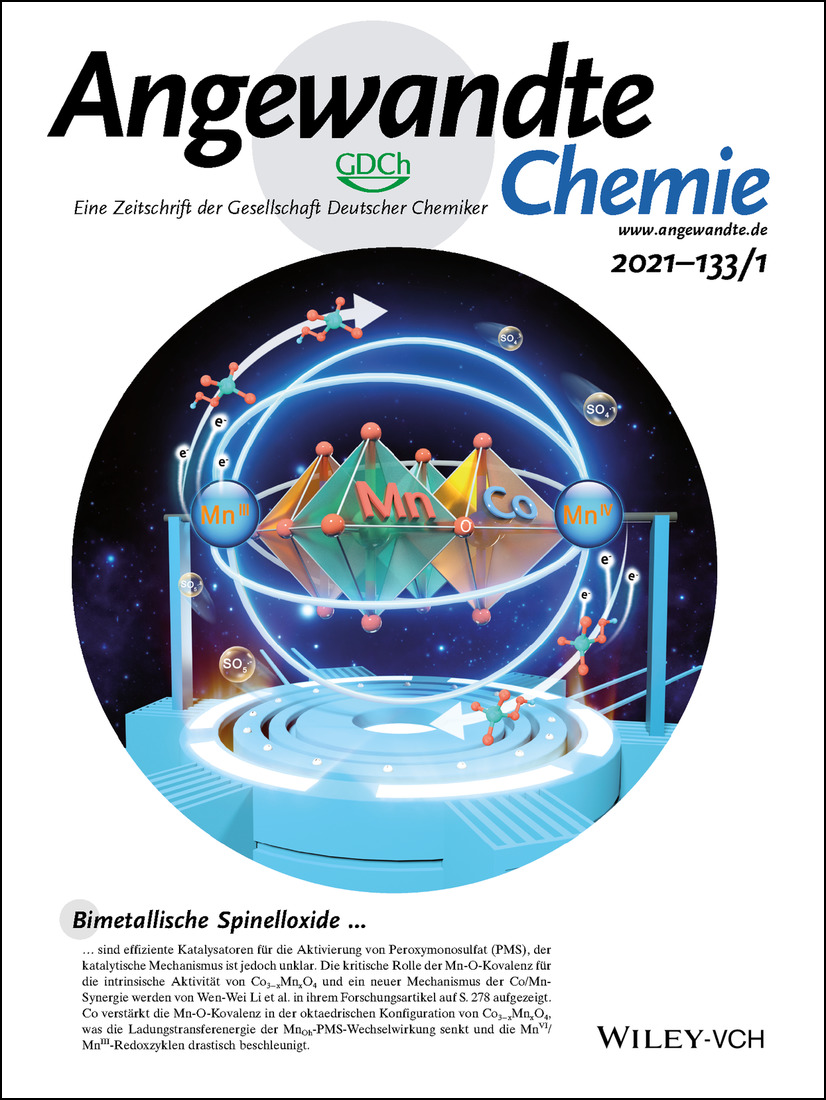
Bimetallische Spinelloxide sind effiziente Katalysatoren für die Aktivierung von Peroxymonosulfat (PMS), der katalytische Mechanismus ist jedoch unklar. Die kritische Rolle der Mn-O-Kovalenz für die intrinsische Aktivität von Co3−xMnxO4 und ein neuer Mechanismus der Co/Mn-Synergie werden von Wen-Wei Li et al. in ihrem Forschungsartikel auf S. 278 aufgezeigt. Co verstärkt die Mn-O-Kovalenz in der oktaedrischen Konfiguration von Co3−xMnxO4, was die Ladungstransferenergie der MnOh-PMS-Wechselwirkung senkt und die MnVI/MnIII-Redoxzyklen drastisch beschleunigt.
Innenrücktitelbild: Diels–Alder Polymer Networks with Temperature-Reversible Cross-Linking-Induced Emission (Angew. Chem. 1/2021)
- Page: 519
- First Published: 12 November 2020
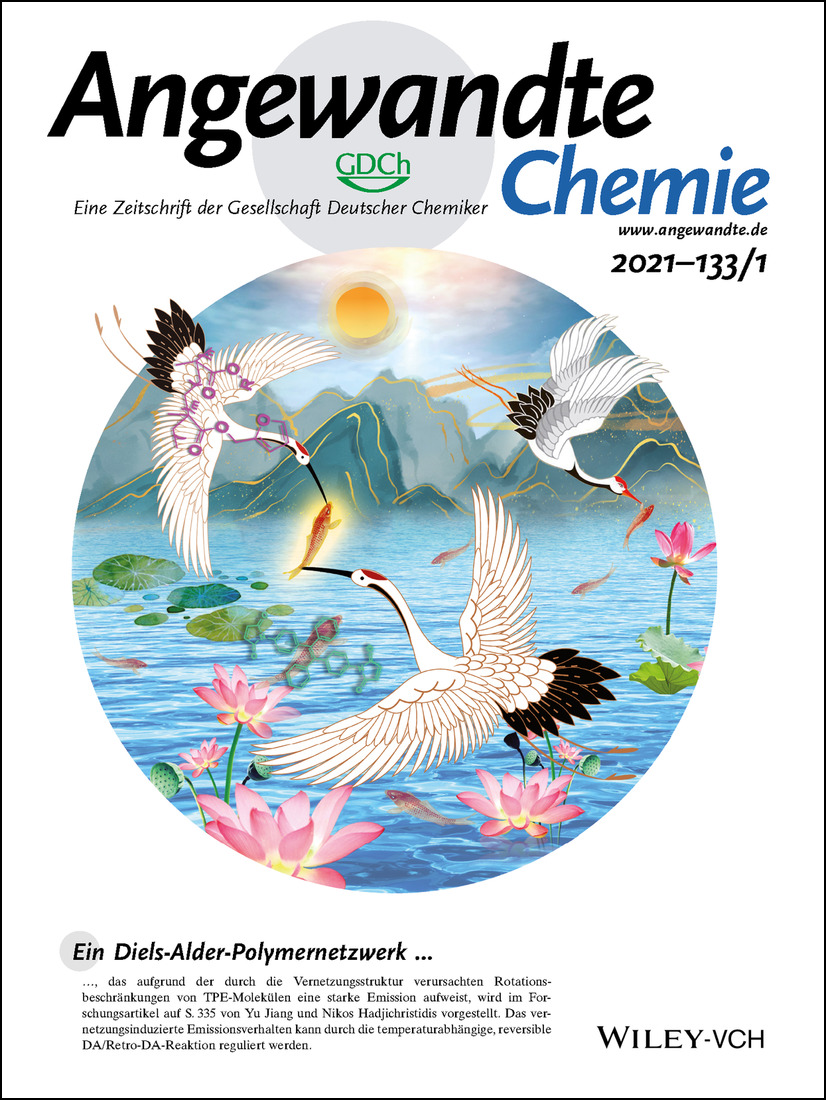
Ein Diels-Alder-Polymernetzwerk , das aufgrund der durch die Vernetzungsstruktur verursachten Rotationsbeschränkungen von TPE-Molekülen eine starke Emission aufweist, wird im Forschungsartikel auf S. 335 von Yu Jiang und Nikos Hadjichristidis vorgestellt. Das vernetzungsinduzierte Emissionsverhalten kann durch die temperaturabhängige, reversible DA/Retro-DA-Reaktion reguliert werden.
Rücktitelbild: Isomerisierungsreaktionen in anionischen mesoionischen Carbenboraten und Kontrolle der Eigenschaften und Reaktivität in den entstehenden CoII-Komplexen durch agostische Wechselwirkungen (Angew. Chem. 1/2021)
- Page: 520
- First Published: 15 December 2020

Anionische Borat-basierte bi-mesoionische Carbene, die auf 1,2,3-Triazol-4-ylidenen basieren, zeigen einzigartige C-N-Isomerisierungsreaktionen. In ihrem Forschungsartikel auf S. 505 berichten Biprajit Sarkar und Mitarbeiter über die isomerisierten Liganden in CoII-Komplexen. Das Bild zeigt diese Komplexe, die sich trotz einer sehr ähnlichen ersten Koordinationssphäre in Geometrie, Spinzustand und Reaktivität unterscheiden. Die Unterschiede werden durch die zweite Koordinationssphäre verursacht, in der agostische Wechselwirkungen das Cobaltzentrum beeinflussen.
Frontispiz
Frontispiz: Discovery of Key TIPS-Naphthalene for Efficient Visible-to-UV Photon Upconversion under Sunlight and Room Light
- First Published: 22 December 2020
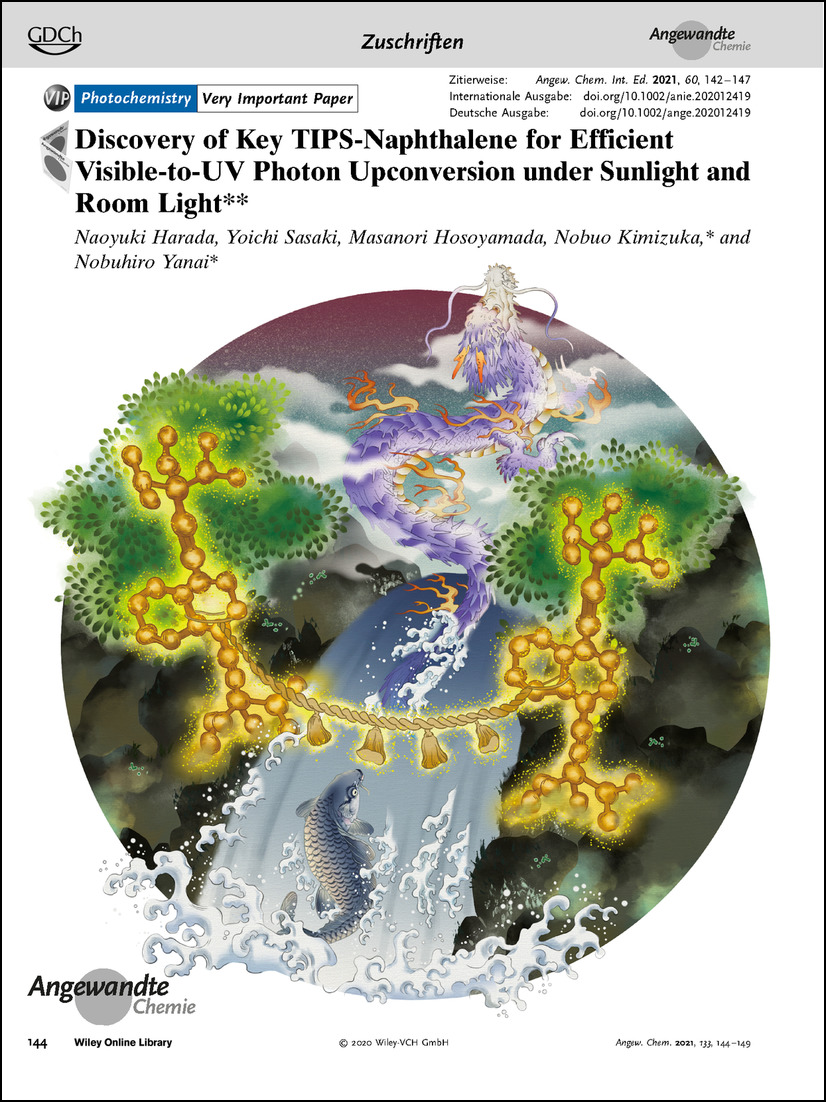
Photochemie In der Zuschrift auf S. 144 berichten Nobuo Kimizuka, Nobuhiro Yanai et al. über die Entdeckung eines Naphthalin-Derivats für die effiziente Vis-zu-UV-Upconversion unter Sonnenlicht.
Frontispiz: Phase-Junction Electrocatalysts towards Enhanced Hydrogen Evolution Reaction in Alkaline Media
- First Published: 22 December 2020
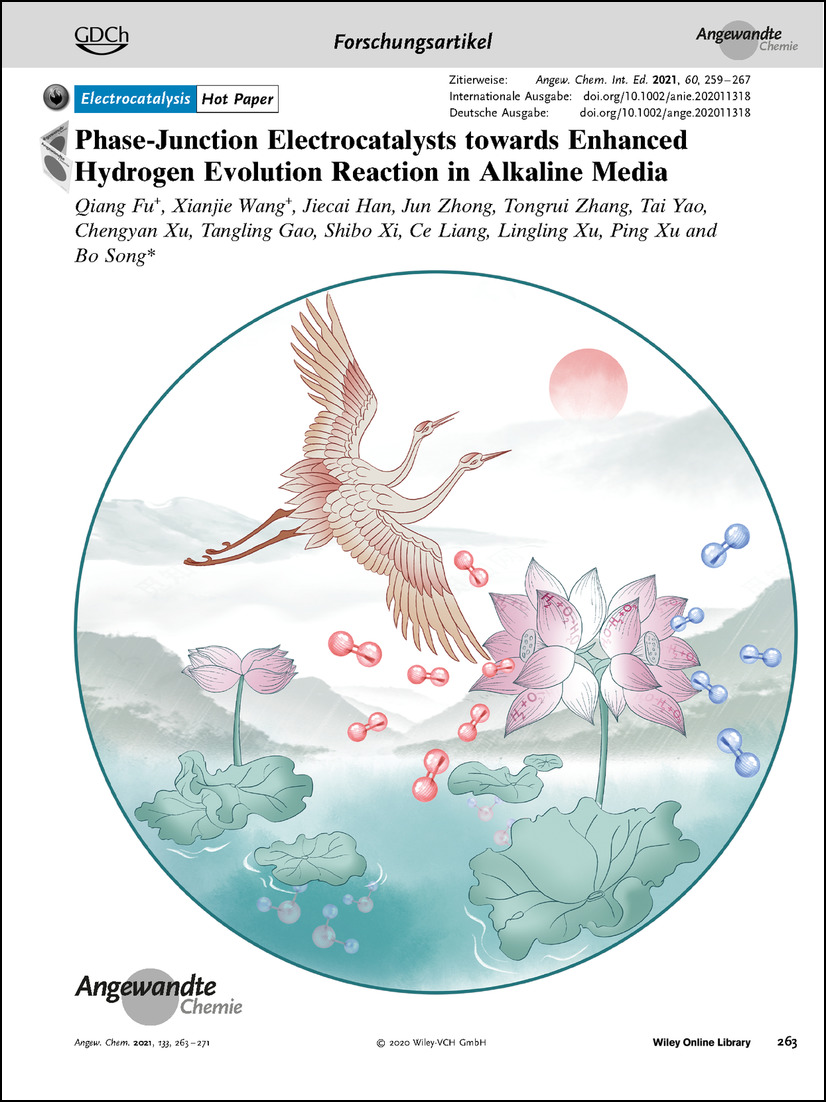
Elektrokatalyse Elektrokatalysatoren mit Phasenkontakt für die verstärkte Wasserstoffentwicklungsreaktion in alkalischen Medien werden von Bo Song et al. im Forschungsartikel auf S. 263 vorgestellt.
Graphisches Inhaltsverzeichnis
Graphisches Inhaltsverzeichnis: Angew. Chem. 1/2021
- Pages: 5-21
- First Published: 22 December 2020
Kurzaufsätze
β-Lactamase
Fluorogenic Probes/Inhibitors of β-Lactamase and their Applications in Drug-Resistant Bacteria
- Pages: 24-40
- First Published: 26 June 2020

This Minireview describes the resistance mechanism of bacteria producing β-lactamase and further summarize the fluorogenic probes/inhibitors of β-lactamase, and their applications in the treatment of infectious diseases. We provide guidelines for the design of fluorogenic probes with improved selectivity/sensitivity/effectiveness to identify further inhibitors for β-lactamases and eventually overcome bacterial resistance.
Anti-Amyloid Drugs
Nanochaperone-Based Strategies to Control Protein Aggregation Linked to Conformational Diseases
- Pages: 41-52
- First Published: 24 July 2020
Main Group Chemistry
Frustrated Radical Pairs: Insights from EPR Spectroscopy
- Pages: 53-65
- First Published: 15 September 2020

Single or Double? This Minireview highlights the recent new reactivities of frustrated Lewis pairs that disclose that certain combinations of Lewis acids and bases undergo single-electron transfer processes. In these studies, Electron Paramagnetic Resonance spectroscopy has been instrumental in the elucidation of reaction pathways.
Aufsätze
Cellulose
Chemische Modifizierung der reduzierenden Enden von Cellulosenanokristallen
- Pages: 66-88
- First Published: 24 April 2020
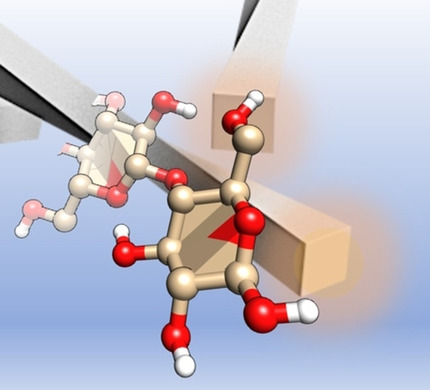
Topochemische Reaktionen am reduzierenden Ende von Nanocellulose sind ein Trend in der Cellulosematerialforschung. Die Chemie ist Aldehyd-spezifisch und nutzt die inhärente Direktionalität der Ketten des Cellulose-I-Kristalles – mit allen Aldehydgruppen exklusiv an einem Ende. Ziel dieses Aufsatzes ist es, Herausforderungen der Endgruppen-selektiven Modifizierungen zu diskutieren und das Potential für neue Nanocellulosematerialien hervorzuheben.
Enzymkatalyse
Biokatalyse: Enzymatische Synthese für industrielle Anwendungen
- Pages: 89-123
- First Published: 18 June 2020

Die Biokatalyse hat sich zu einer reifen Technologie für die Synthese von Chemikalien und Pharmazeutika entwickelt, wo sie durch hohe Selektivität und milde Reaktionsbedingungen Vorteile bringt. Dieser Aufsatz hebt aktuelle Erfolge hervor, mit besonderem Fokus auf industrielle Anwendungen und führt Leistungsindikatoren ein, um die Effizienz von Enzymverfahren zu beurteilen.
Nanohybrids
Fullerenes as Key Components for Low-Dimensional (Photo)electrocatalytic Nanohybrid Materials
- Pages: 124-143
- First Published: 17 August 2020
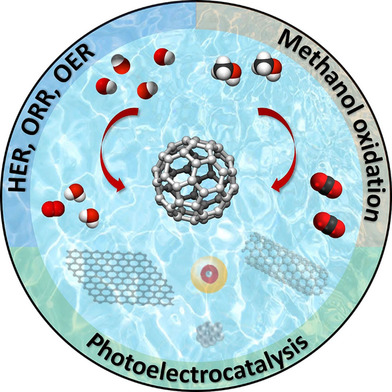
This Review discusses synthetic approaches to fullerene-based hybrids with low-dimensional (LD) materials and their properties. Recent advances in the design of fullerene-based LD nanomaterials for (photo)electrocatalytic applications are emphasized. The relationship between the electronic structures and the catalytic functions of the heterostructures is addressed to provide an understanding of these emerging materials at the molecular level.
Zuschriften
Photochemistry | Very Important Paper
Discovery of Key TIPS-Naphthalene for Efficient Visible-to-UV Photon Upconversion under Sunlight and Room Light
- Pages: 144-149
- First Published: 15 October 2020
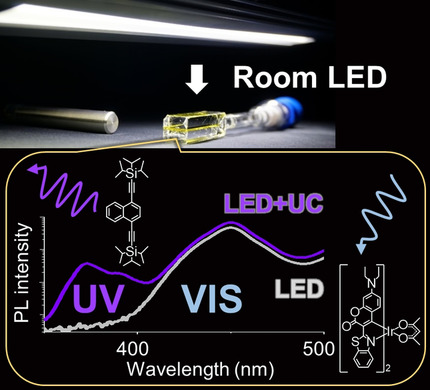
The highest efficiency of photon upconversion from visible (vis) light to ultraviolet (UV) light is achieved based on the discovery of excellent UV emitter TIPS-naphthalene. By sensitizing the TIPS-naphthalene triplet with a superior donor Ir(C6)2(acac) that does not quench UV emission, even weak visible light such as sunlight and room LEDs is efficiently upconverted to UV light.
Proteins
Broadband Dynamics of Ubiquitin by Anionic and Cationic Nanoparticle Assisted NMR Spin Relaxation
- Pages: 150-154
- First Published: 09 September 2020
Biosynthesis
An Unusual Type II Polyketide Synthase System Involved in Cinnamoyl Lipid Biosynthesis
- Pages: 155-160
- First Published: 28 August 2020
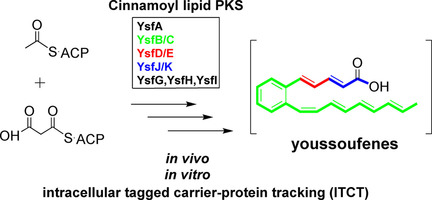
The biosynthesis of the cinnamoyl lipid (CL) polyketide natural products youssoufenes involves an isomerase-dependent acyl carrier protein (ACP)-tethered polyunsaturated chain elongation process. The three ketosynthase/chain length factor (KS/CLF) complexes are revealed to act in harmony, assembling different parts of the carbon skeleton in a modular manner.
Asymmetric Catalysis
Carbene-Catalyzed Enantioselective Aldol Reaction: Post-Aldol Stereochemistry Control and Formation of Quaternary Stereogenic Centers
- Pages: 161-167
- First Published: 15 September 2020

Addition of a carbene catalyst to vinyl carbonates initiates the aldol reaction. This aldol event is subsequently followed by an enantioselective acylation that is mediated by the same (chiral) NHC catalyst without introducing any additional substance. This post-aldol process takes care of the enantioselectivity issues and drives the otherwise reversible aldol reaction toward a complete conversion.
Peptides
Concentration-Dependent Structural Transition of the HIV-1 gp41 MPER Peptide into α-Helical Trimers
- Pages: 168-172
- First Published: 11 September 2020
Organocatalysis | Very Important Paper
Photoinduced Aerobic Iodoarene-Catalyzed Spirocyclization of N-Oxy-amides to N-Fused Spirolactams
- Pages: 173-177
- First Published: 21 September 2020
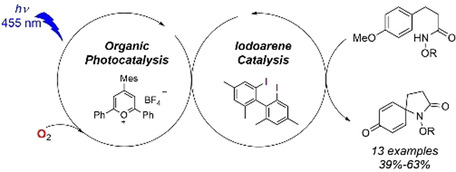
Using the spiro-cyclization of amides as a benchmark reaction, the feasibility of photocatalytic aerobic iodoarene catalysis was demonstrated by relying on a pyrylium photocatalyst under blue light irradiation. This unprecedented dual organocatalytic system allows the use of low catalytic loading of both catalysts under very mild operating conditions.
Asymmetric Catalysis
Oxidative Kinetic Resolution of Cyclic Benzylic Ethers
- Pages: 178-182
- First Published: 28 October 2020

A manganese-catalyzed kinetic resolution through asymmetric C(sp3)−H oxidation was applied to a wide range of five-membered 1,3-dihydroisobenzofurans and 2,3-dihydrobenzofurans as well as six-membered 6H-benzo[c]chromenes bearing diverse α-substituents with extremely efficient enantiodiscrimination (see scheme). Late-stage oxidative kinetic resolution of bioactive molecules that are otherwise difficult to access was further demonstrated.
Heterogeneous Catalysis | Hot Paper
Turning on Zn 4s Electrons in a N2-Zn-B2 Configuration to Stimulate Remarkable ORR Performance
- Pages: 183-187
- First Published: 15 September 2020
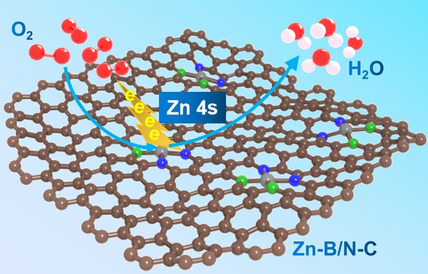
A B,N co-coordinated catalyst (denoted Zn-B/N-C) has been fabricated wherein the s-band of Zn+ has been manipulated. The ORR efficiency is maximized by the B2-Zn-N2 configuration, which holds enough Zn 4s electrons to guarantee favorable adsorption of O2 as well as visible charge transfer. The catalyst shows excellent long-term stability in both acid and alkaline environment.
Rearrangement
Radical Addition Enables 1,2-Aryl Migration from a Vinyl-Substituted All-Carbon Quaternary Center
- Pages: 188-192
- First Published: 11 September 2020

A photocatalytic system was developed for perfluoroalkylation of vinyl-substituted all-carbon quaternary centers by using perfluoroalkyl halides with concomitant 1,2-aryl migration. This strategy possesses good functional-group compatibility and can serve as a powerful synthetic tool for the construction of valuable perfluoroalkylated compounds that would be difficult to prepare by other methods.
Synthetic Methods
C−H Methylation of Iminoamido Heterocycles with Sulfur Ylides
- Pages: 193-198
- First Published: 15 September 2020
Protein Imaging
Dual Intramolecular Electron Transfer for In Situ Coreactant-Embedded Electrochemiluminescence Microimaging of Membrane Protein
- Pages: 199-203
- First Published: 21 September 2020
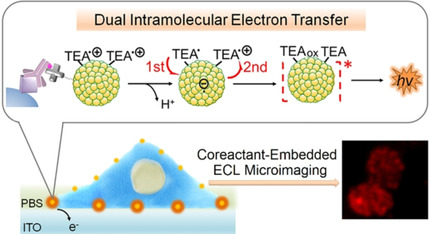
Coreactant-Embedded ECL Microimaging: A dual intramolecular electron transfer strategy is designed for construction of a coreactant-embedded ECL microimaging system. The proposed tertiary amine conjugated Pdots and imaging system realize the visual analysis of membrane protein on single living cells and in situ evaluation of its expression change upon drug treatment.
Enzyme Mimics and Logic Gates
Complex Cascade Reaction Networks via Cross β Amyloid Nanotubes
- Pages: 204-209
- First Published: 21 September 2020
Main-Group Coordination Chemistry
A Simple Homoleptic Gallium(I) Olefin Complex: Mimicking Transition-Metal Chemistry at a Main-Group Metal?
- Pages: 210-213
- First Published: 21 September 2020
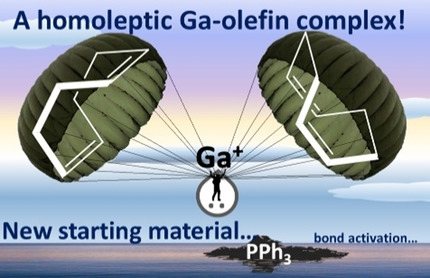
The yet underdeveloped coordination chemistry of GaI species won a new addition to their family. With an unprecedented bonding situation in main-group chemistry, the complex salt Ga(COD)2+[Al(ORF)4]− (COD=1,5-cyclooctadiene; RF=C(CF3)3) offers novel options. Its properties are compared with respect to those of related transition-metal species.
Synthetic Methods | Hot Paper
α-Selective Ring-Opening Reactions of Bicyclo[1.1.0]butyl Boronic Ester with Nucleophiles
- Pages: 214-218
- First Published: 21 September 2020
Allenes | Hot Paper
Hydromagnesiation of 1,3-Enynes by Magnesium Hydride for Synthesis of Tri- and Tetra-substituted Allenes
- Pages: 219-223
- First Published: 16 September 2020
Circular Dichroism | Hot Paper
500-Fold Amplification of Small Molecule Circularly Polarised Luminescence through Circularly Polarised FRET
- Pages: 224-229
- First Published: 08 October 2020

The amplification of circularly polarised (CP) luminescence of a small chiral molecule embedded within an achiral polymer matrix is demonstrated. This amplification (from |gPL|=0.0003 to 0.15) is observed in several achiral polymer hosts, due to electrodynamic coupling between the electric and magnetic transition dipoles of the donor (polymer) and acceptor (small molecule), which results in efficient CP Förster resonance energy transfer.
Frustrated Lewis Pairs
Frustrated Lewis Pair Chelation as a Vehicle for Low-Temperature Semiconductor Element and Polymer Deposition
- Pages: 230-233
- First Published: 22 September 2020
Peptidklammern
Mechanische Verstärkung von Coiled Coils mit Lactam und Histidin-Metall-Klammern
- Pages: 234-239
- First Published: 17 September 2020
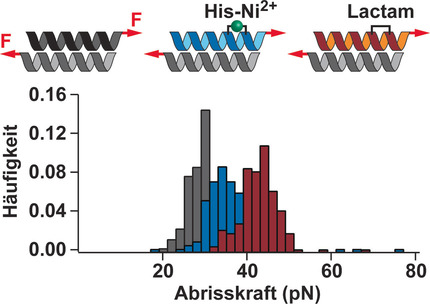
Bitte klammern! Terminale Helixwindungen eines heterodimeren Coiled Coils wurden mittels einer kovalenten Lactambrücke oder einer reversiblen Metallkoordinationsbindung geklammert. Die Klammern erhöhen den Widerstand gegen die Entfaltung der Helices und erhöhen die Stabilität des Coiled Coils gegenüber thermischer Denaturierung und extern wirkenden Kräften.
Kolloidale Katalyse
Skalierbare und wiederverwertbare organische Kolloide als Kaskadenkatalysatoren
- Pages: 240-245
- First Published: 20 September 2020
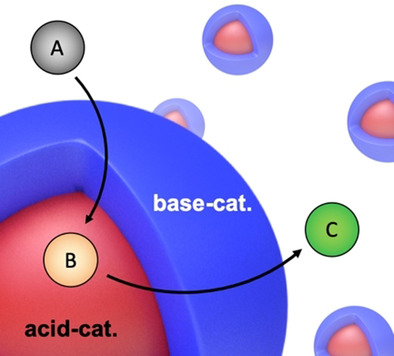
Ein rein organischer kolloidaler Kern-Schale-Katalysator wurde durch eine zweistufige tensidfreie Emulsionspolymerisation hergestellt. Der kolloidale Säure/Basenkatalysator eignet sich für praktische Anwendungen aufgrund seiner hohen katalytischen Aktivität in Wasser, Aufskalierungs-Möglichkeiten und einfachen Rückgewinnung.
Vinylanion-Analoga
Ein gemischtes, schwereres Si=Ge Analogon eines Vinylanions
- Pages: 246-250
- First Published: 29 September 2020
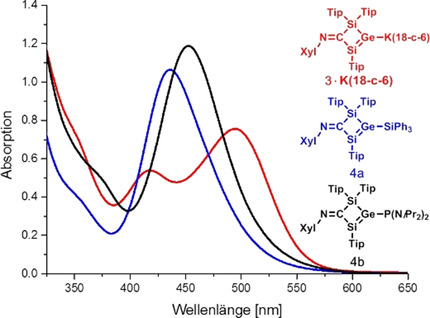
Das erste heteronukleare Vinylanion aus zwei schwereren Elementen der Gruppe 14, das Silagermenid 3⋅K(18-c-6), ist durch KC8 Reduktion eines NHC-stabilisierten Germylens oder des entsprechenden NHC-freien Digermens zugänglich. Die Anwendbarkeit als Synthon in der Synthese von präzedenzlosen funktionalisierten Silagermenen 4 a,b und eine erhebliche π-Konjugation zwischen den N=C und Si=Ge Doppelbindungen werden beschrieben.
Asymmetrische Katalyse | Hot Paper
Dynamische kinetische Racematspaltung von Alkoholen mittels enantioselektiver Silylierung ermöglicht durch zwei orthogonale Übergangsmetallkatalysatoren
- Pages: 251-255
- First Published: 26 October 2020
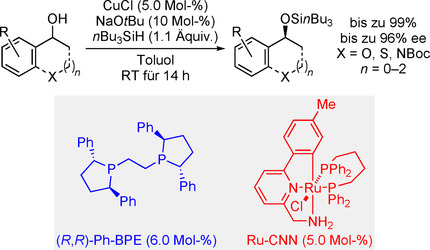
Die Kombination eines chiralen Kupferkatalysators und eines bifunktionalen Rutheniumpincerkomplexes ermöglicht die nichtenzymatische dynamische kinetische Racematspaltung von acyclischen und cyclischen Benzylalkoholen. Die enantioselektive Cu-H-katalysierte dehydrierende Si-O-Kupplung und die übergangsmetallkatalysierte Racemisierung des Alkohols sind vollkommen orthogonal, wodurch hohe Ausbeuten und gute Enantioselektivitäten erreicht werden.
Medikamentenentwicklung
Fragment-Bindung an die Kinase-Scharnier-Region: Wenn Ladungsverteilung und lokale pKa-Verschiebungen etablierte Bioisosterie-Konzepte fehlleiten
- Pages: 256-262
- First Published: 06 October 2020
Forschungsartikel
Electrocatalysis | Hot Paper
Phase-Junction Electrocatalysts towards Enhanced Hydrogen Evolution Reaction in Alkaline Media
- Pages: 263-271
- First Published: 22 September 2020
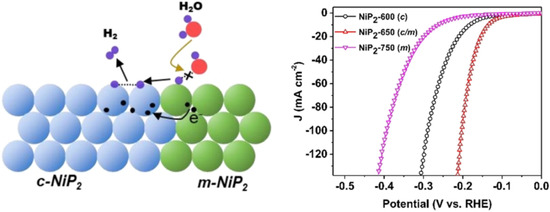
Constructing phase-junction electrocatalysts could effectively accelerate the Volmer step and modulate the electronic structure at the interface. NiP2-650(c/m) shows an overpotential η10 of 134 mV vs. RHE at 10 mA cm−2 and a Tafel slope of 67 mV dec−1, which is significantly reduced by 26 % and 96 % compared with c-NiP2 and m-NiP2, respectively.
Thermoelectricity | Hot Paper
Strong Valence Band Convergence to Enhance Thermoelectric Performance in PbSe with Two Chemically Independent Controls
- Pages: 272-277
- First Published: 14 September 2020
Catalysis
Mn−O Covalency Governs the Intrinsic Activity of Co-Mn Spinel Oxides for Boosted Peroxymonosulfate Activation
- Pages: 278-284
- First Published: 23 September 2020
Crystal Engineering
Cocrystallization Tailoring Multiple Radiative Decay Pathways for Amplified Spontaneous Emission
- Pages: 285-293
- First Published: 22 July 2020
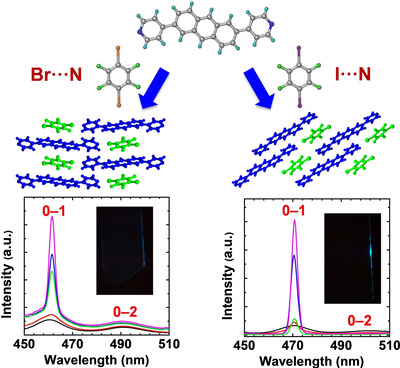
A cocrystal packing arrangement has been tuned from mixed to segregated stack by subtle modulation of halogen bonds from C−Br⋅⋅⋅N to C−I⋅⋅⋅N, giving rise to significantly enhanced radiative decay rate and selectivity. Amplified spontaneous emission characteristics were improved remarkably by cocrystallization, opening up possibilities to the development of organic lasing materials by tailoring multiple radiative decay pathways.
Electrochemistry
Hydrogen Bonding Enhances the Electrochemical Hydrogenation of Benzaldehyde in the Aqueous Phase
- Pages: 294-300
- First Published: 07 August 2020
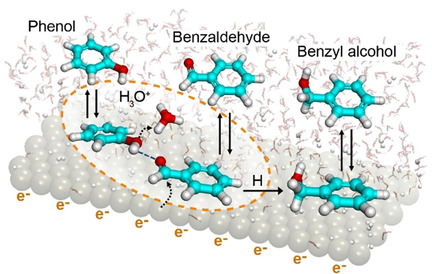
Electrocatalytic hydrogenation of benzaldehyde to benzyl alcohol on carbon-supported metals proceeds through proton-coupled electron transfer. The presence of polar co-adsorbates such as phenols enhances the hydrogenation rate of the aldehyde by the polarization of the carbonyl group because of the formation of a hydrogen bond. Increasing either the concentration or acidity of the co-adsorbate increases the rates of selective carbonyl reduction.
Strained Carbocycles
Selective Alkynylallylation of the C−C σ Bond of Cyclopropenes
- Pages: 301-307
- First Published: 10 September 2020

1,2-Alkynylallylation of a specific C−C σ bond in cyclopropenes was realized by a simple, neutral, low-cost palladium catalytic system with high TONs. This decarboxylative reorganization reaction is an efficient way to construct highly functionalized dienynes in excellent regio- and stereoselectivity. A nonclassical β-C elimination promoted by 1,4-palladium migration was described herein for the first time.
Synthetic Methods
Dual Reactivity of 1,2,3,4-Tetrazole: Manganese-Catalyzed Click Reaction and Denitrogenative Annulation
- Pages: 308-316
- First Published: 14 September 2020
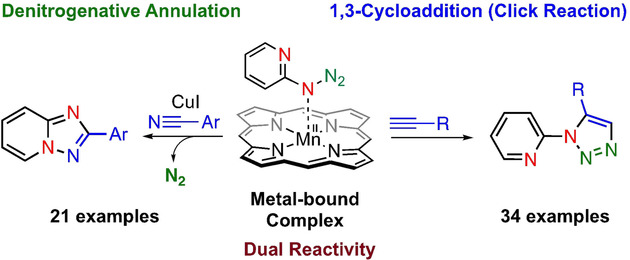
A Mn-porphyrin-based catalytic method that enables access to two different classes of nitrogen heterocycles is reported. Mechanistic investigations found that a 1,3-cycloaddition click reaction occurs directly via the Mn-bound complex, whereas denitrogenative annulation proceeds through an Mn-N complex. The reported method is compatible with a wide range of substrates for both reactions.
Molecular Switches
Light-Controlled Regioselective Synthesis of Fullerene Bis-Adducts
- Pages: 317-324
- First Published: 28 July 2020
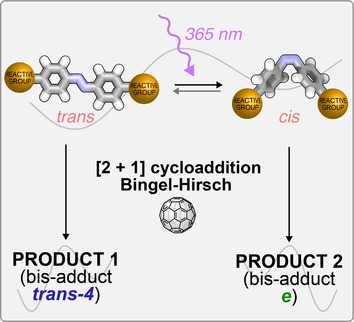
By incorporating azobenzene photochromic units in the double functionalization of [60]fullerene, the regiochemistry of the double cyclopropanation reaction could be controlled by using either the E or the Z isomeric forms of the photoswitch. Once covalently linked to the C60 sphere, the azobenzene unit changes its light- and thermally-induced isomerization properties.
Vaccine Development
Overcoming Symmetry Mismatch in Vaccine Nanoassembly through Spontaneous Amidation
- Pages: 325-334
- First Published: 04 September 2020
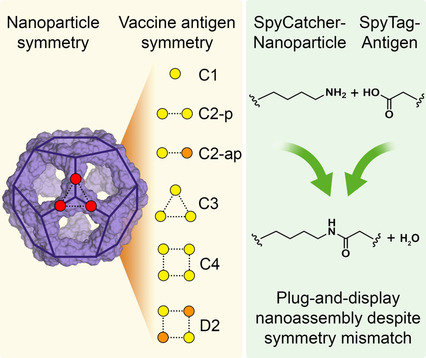
Nanoassembly can play a key role in generating effective vaccines for emerging (SARS-CoV-2) and established (influenza) pandemic threats. SpyTag-mediated display was used to adapt the nanocage to the challenge of bacterial or viral antigens with diverse cyclic and dihedral symmetries. Establishing display of both trimeric and tetrameric antigens may lead to an influenza vaccine with broader protection.
Polymer AIE | Hot Paper
Diels–Alder Polymer Networks with Temperature-Reversible Cross-Linking-Induced Emission
- Pages: 335-341
- First Published: 08 October 2020
Nonequilibrium Processes | Hot Paper
DNA Reaction–Diffusion Attractor Patterns
- Pages: 342-348
- First Published: 11 September 2020

Programmable DNA-based reaction–diffusion processes form self-stabilizing spatial patterns at a length scale of tens to hundreds of microns. Such patterns can recapitulate the function of feedback control algorithms to repair damage, which is demonstrated using UV light-triggered competition reactions that consume the patterned species.
Nitrogen Reduction Reaction
Modulating Single-Atom Palladium Sites with Copper for Enhanced Ambient Ammonia Electrosynthesis
- Pages: 349-354
- First Published: 16 September 2020
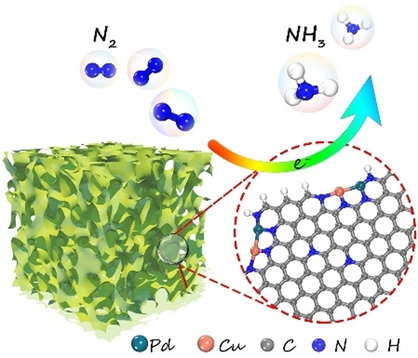
We have designed an efficient N2 reduction reaction (NRR) catalyst with diatomic Pd-Cu sites on N-doped porous carbon by modifying single-atom Pd sites with Cu. The catalyst achieves high Faradaic efficiency and a desirable yield rate for NH3 electrosynthesis under ambient conditions, outperforming the individual single-atom counterparts.
Imaging Agents | Very Important Paper
Hyperfluorescence Imaging of Kidney Cancer Enabled by Renal Secretion Pathway Dependent Efflux Transport
- Pages: 355-363
- First Published: 02 September 2020
Germanane
Synthesis of 2D Germanane (GeH): a New, Fast, and Facile Approach
- Pages: 364-369
- First Published: 31 August 2020
Chalcogen Bonding
Strong σ-Hole Activation on Icosahedral Carborane Derivatives for a Directional Halide Recognition
- Pages: 370-374
- First Published: 14 September 2020
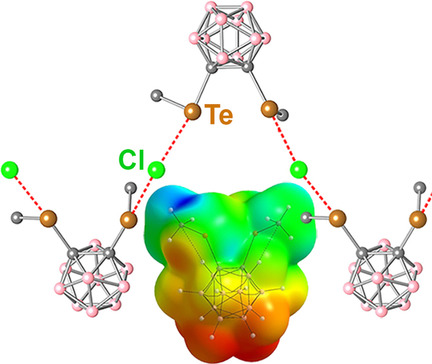
Substituted carboranes with -SeMe, -TeMe, and -I groups on the skeletal carbon vertices are shown to be outstanding chalcogen bond (ChB) and halogen bond (XB) donors to recognize halide anions. Moreover, the interactions are found to be remarkably efficient with short distances and high directionality. Theoretical calculations further validate the presence of a deep σ-hole on Se, Te, and I.
Hydroamidation
A General and Highly Selective Palladium-Catalyzed Hydroamidation of 1,3-Diynes
- Pages: 375-383
- First Published: 22 September 2020

The advanced Pd catalyst system with Neolephos as a ligand enables highly selective hydroamidation of unbiased (un)symmetrical 1,3-diynes. In this way, a wide range of synthetically useful α-alkynyl-α,β-unsaturated amides are afforded in good to high yields with excellent chemo-, regio-, and stereoselectivities.
Asymmetric Catalysis
Copper-Catalyzed Enantioconvergent Cross-Coupling of Racemic Alkyl Bromides with Azole C(sp2)−H Bonds
- Pages: 384-388
- First Published: 19 September 2020

The use of a cinchona-alkaloid-derived N,N,P-ligand leads to the direct enantioconvergent coupling of racemic alkyl bromides with azole C(sp2)−H bonds by copper catalysis. The key to success is the ligand-enabled facile oxidative addition at approximately room temperature that suppresses product racemization at elevated temperature. This method provides a range of enantioenriched α-chiral alkylated azoles.
Glycoconjugates
Generation of Glycosyl Radicals from Glycosyl Sulfoxides and Its Use in the Synthesis of C-linked Glycoconjugates
- Pages: 389-394
- First Published: 15 September 2020
Single-Atom Catalysts
Economizing on Precious Metals in Three-Way Catalysts: Thermally Stable and Highly Active Single-Atom Rhodium on Ceria for NO Abatement under Dry and Industrially Relevant Conditions
- Pages: 395-402
- First Published: 02 September 2020
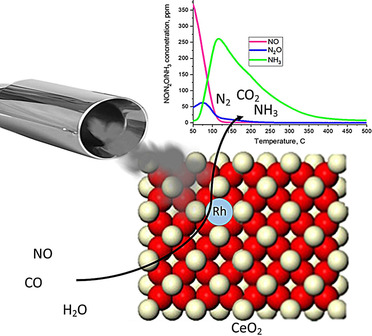
Single rhodium ions on ceria are the active species for nitric oxide (NO) reduction by carbon monoxide (CO) in the low-temperature regime in dry and wet gas streams: only a small amount of expensive rhodium around 0.1 wt % is needed to produce active catalysts with very high turn-over frequencies >300 h−1, full NO conversion below 150 °C and stable time-on-stream performance.
Cross-Coupling
Cross-Coupling between Hydrazine and Aryl Halides with Hydroxide Base at Low Loadings of Palladium by Rate-Determining Deprotonation of Bound Hydrazine
- Pages: 403-412
- First Published: 14 September 2020

A practical coupling of (hetero)aryl halides with hydrazine to form (hetero)aryl hydrazines, with loadings down to 100 ppm of a Pd catalyst and KOH as base is reported, along with detailed mechanistic data revealing the factors that control the rate and selectivity. Two catalyst resting states are observed, but one major pathway involving rate-limiting deprotonation of hydrazine bound to an arylpalladium(II) chloride complex occurs.
Heterogeneous Catalysis
Tailoring Crystal Facets of Metal–Organic Layers to Enhance Photocatalytic Activity for CO2 Reduction
- Pages: 413-418
- First Published: 08 September 2020
Clathrates
Clathrate XI K58Zn122Sb207: A New Branch on the Clathrate Family Tree
- Pages: 419-427
- First Published: 16 September 2020
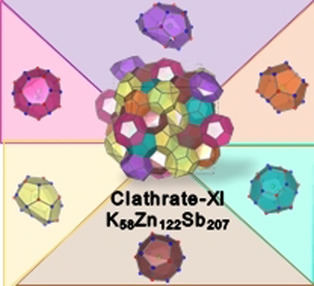
Unconventional synthesis guided by machine-learning and in situ X-ray diffraction allowed the new type of inorganic clathrate K58Zn122Sb207 to be synthesized. This compound is a rare case of an inorganic clathrate which does not contain Group 14 elements, as well as being a structure not seen previously among clathrates. X-ray diffraction and STEM reveal a complex structure with promising thermoelectric properties.
Enzyme Catalysis
Structural Evidence for a [4Fe-5S] Intermediate in the Non-Redox Desulfuration of Thiouracil
- Pages: 428-435
- First Published: 15 September 2020
![Structural Evidence for a [4Fe-5S] Intermediate in the Non-Redox Desulfuration of Thiouracil](/cms/asset/abd1e92b-b34a-429d-8062-85e344df2112/ange202011211-toc-0001-m.jpg)
[4Fe-5S] clusters are emerging as possible key catalytic intermediates in various sulfuration and desulfuration reactions. A structurally characterized [4Fe-5S] intermediate, resulting from the transfer of a sulfur atom from thiouracil to the [4Fe-4S] cluster of an enzyme, suggests that [4Fe-4S] clusters can function as sulfur transfer agents.
Viruses
Targeting RNA G-Quadruplex in SARS-CoV-2: A Promising Therapeutic Target for COVID-19?
- Pages: 436-442
- First Published: 16 September 2020
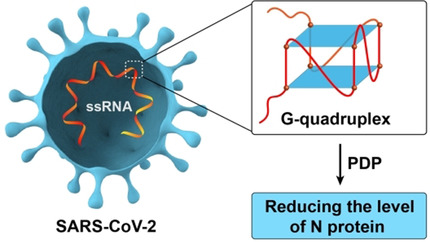
Putative G4-forming sequences (PQSs) in SARS-CoV-2 have been verified to form stable RNA G-quadruplex structures in live cells. G4-specific targeting compounds, such as PDP (pyridostatin derivative), can stabilize this structure and decrease the protein levels of SARS-CoV-2 N by inhibition of its translation both in vitro and in vivo.
Coordination Polymers
1D Coordination π–d Conjugated Polymers with Distinct Structures Defined by the Choice of the Transition Metal: Towards a New Class of Antiaromatic Macrocycles
- Pages: 443-449
- First Published: 04 September 2020
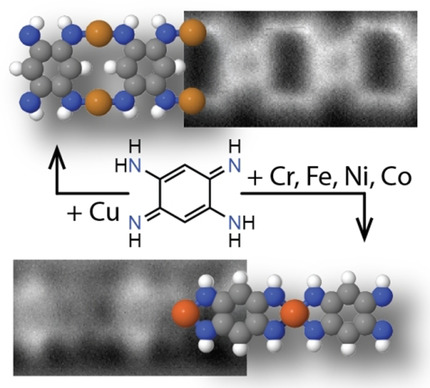
The on-surface synthesis approach under UHV conditions has led us to the formation of 1D coordination π–d conjugated polymers on metal surfaces. The reaction of quinoidal ligand with different transition metals results in two distinct coordination motifs: four-fold (Cr, Fe, Co, Ni) and two-fold (Cu). The backbone of the Cu-coordinated 1D chain is formed by antiaromatic 12-membered macrocycles.
Natural Products | Hot Paper
The Formosalides: Structure Determination by Total Synthesis
- Pages: 450-458
- First Published: 18 September 2020
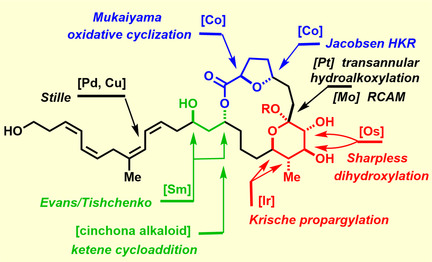
Total synthesis allowed the identification of the most likely stereostructure of the cytotoxic marine macrolides of the formosalide family (see structure) from eight possibilities. The successful route was based upon an inherently flexible blueprint that builds all stereogenic centers by strictly catalyst controlled transformations prior to formation of the polycyclic framework by late-stage alkyne metathesis followed by a π-acid-catalyzed transannular cyclization.
Logic Operators
Thermochromic Color Switching to Temperature Controlled Volatile Memory and Counter Operations with Metal–Organic Complexes and Hybrid Gels
- Pages: 459-469
- First Published: 18 September 2020

Thermochromic metal complexes of bipyridyl ligands and their gels were shown to have broad application in controlled light transmission windows and logic operations. Herein, temperature is used as a precision input for effecting reversible multi-step changes in the optical properties of metal–organic complexes. Such systems form archetypical prototypes for sequential logic enabled volatile multi-state memory and arithmetic operators.
CO2/CO Electroreduction | Hot Paper
Size-Dependent Activity and Selectivity of Atomic-Level Copper Nanoclusters during CO/CO2 Electroreduction
- Pages: 470-476
- First Published: 18 September 2020
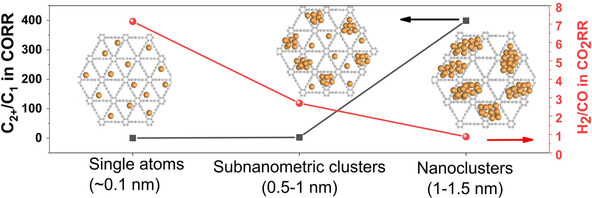
The size-controlled Cu catalysts from single atoms to subnanometric clusters (0.5–1 nm) to nanoclusters (1–1.5 nm) on a graphdiyne matrix are prepared by an acetylenic-bond-directed site-trapping approach. Size dependence of activity and selectivity in the CO/CO2 reduction reaction (CO/CO2RR) over these catalysts is shown for the first time.
Dinitrogen Cleavage | Hot Paper
Facile Dinitrogen and Dioxygen Cleavage by a Uranium(III) Complex: Cooperativity Between the Non-Innocent Ligand and the Uranium Center
- Pages: 477-483
- First Published: 15 September 2020
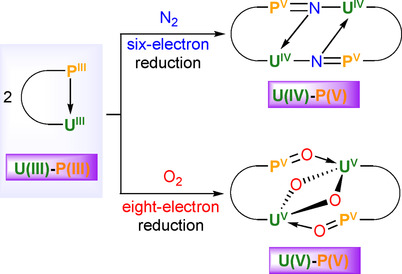
N2 and O2 cleavage was achieved under ambient conditions via a cooperativity between UIII and PIII centers. The N2 triple bond breaking implies a UIII–PIII six-electron reduction. The interaction between UIII and PIII in this molecule allows an eight-electron reduction of two O2 molecules. This study shows that metal–ligand cooperation is a promising strategy for the activation of small molecules.
Protein-Engineering | Hot Paper
Maßgeschneiderte SAM-Synthetasen zur enzymatischen Herstellung von AdoMet-Analoga mit Photoschutzgruppen und zur reversiblen DNA-Modifizierung in Kaskadenreaktionen
- Pages: 484-489
- First Published: 05 October 2020

S-Adenosyl-L-methionin-Analoga bieten die Möglichkeit, die Zielstellen von Methyltransferasen zu studieren. Ihre enzymatische Herstellung war bisher auf aliphatische Gruppen am Schwefel-Atom beschränkt. Wir konnten nun SAM-Synthetasen entwickeln, die AdoMet-Analoga mit Photoschutzgruppen herstellen. Durch Kombination mit DNA-MTasen gelingt das sequenz-spezifische Anbringen und das lichtabhängige Entfernen von Modifikationen an Plasmid-DNA.
Strukturvorhersage | Hot Paper
Vorhersage stickstoffbasierter Verbindungsklassen: Guanidinate TCN3 (T=V, Nb, Ta) und Orthonitridocarbonate T′2CN4 (T′=Ti, Zr, Hf) von Übergangsmetallen
- Pages: 490-497
- First Published: 01 October 2020

Voraussetzungsfreie Struktursuchansätze haben zur Vorhersage von kristallinen Carbodiimiden, Guanidinaten und Orthonitridocarbonaten geführt, wobei letztere erstmals das Strukturmotiv des Diamants in die Hochdruckstickstoffchemie fester Materie einbringen. Mehrere dieser neu erkannten Phasen dürften vielversprechend für die Anwendungsgebiete der photoelektrochemischen Wasserspaltung und der nichtlinearen Optik sein.
Organolithiumchemie
Lösungsmitteleinflüsse auf die Struktur und Stabilität von Alkalimetallcarbenoiden
- Pages: 498-504
- First Published: 02 October 2020

Während in der Chemie gewöhnlicher Organolithiumverbindungen Dimere generell als stabiler als solvatisierte Monomere und Natrium- und Kaliumorganyle als noch reaktiver gelten, scheint sich dieser Trend für Carbenoide umzukehren. DOSY-NMR, SC-XRD-Analysen sowie quantenchemische Studien anhand eines chiralen Modellsystems zeigen bemerkenswerte Unterschiede in den Stabilitäten und Strukturen in Abhängigkeit vom Lösungsmittel.
Mesoionische Carbene | Hot Paper
Isomerisierungsreaktionen in anionischen mesoionischen Carbenboraten und Kontrolle der Eigenschaften und Reaktivität in den entstehenden CoII-Komplexen durch agostische Wechselwirkungen
- Pages: 505-513
- First Published: 20 October 2020




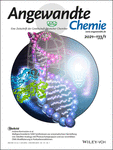
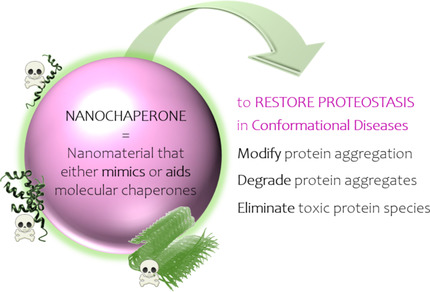
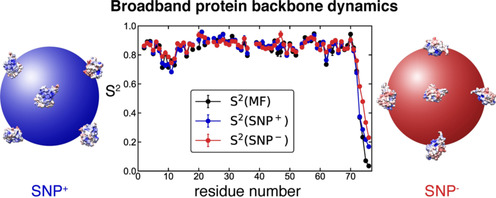
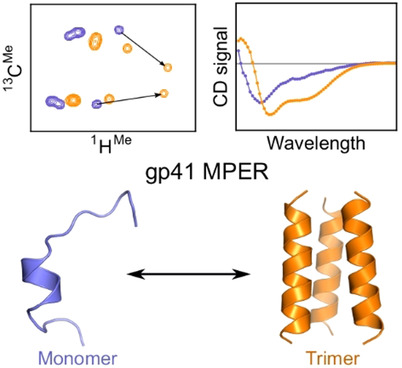
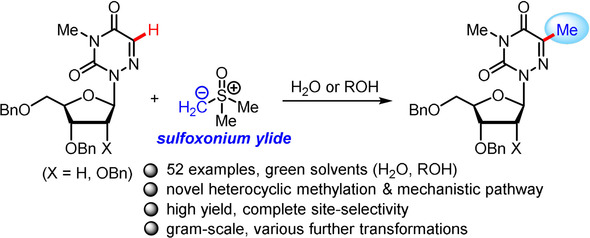
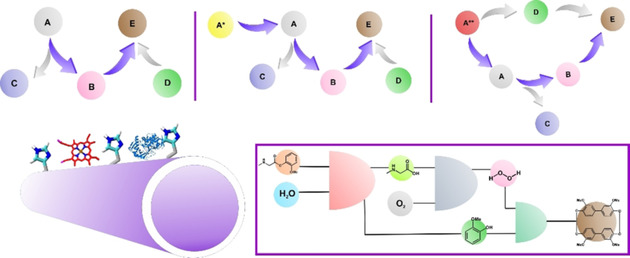
![α-Selective Ring-Opening Reactions of Bicyclo[1.1.0]butyl Boronic Ester with Nucleophiles](/cms/asset/8018fe48-bd9d-4ca3-a071-11186fdf33d2/ange202011739-toc-0001-m.jpg)

